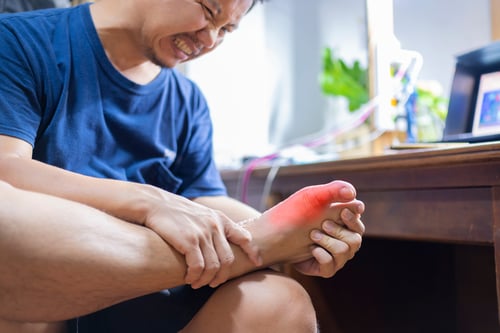
Has social distancing got you wondering if you need to go to the doctor or stay home?
When you drop a weight on your toe or stub it, it’s difficult to say what comes first, the swearing or the pain. And if it is indeed broken, it's hard to believe how much a small bone can wreak such havoc. Some toe fractures may require surgery to allow them to heal in the correct alignment. However, on the brighter side, most toe fractures can be healed by simple treatments such as buddy splinting and probably a wider stable shoe. It is worth taking the time to have your toe sprain or fracture evaluated to determine the best choice.
How to Tell if You Have a Broken Toe
It’s easy to confuse a sprained and broken toe. The pain on a sprained toe mostly subsides after a few days. However, only a doctor can confirm whether it is a fracture or a sprain. The following symptoms will help know whether you have a broken toe:
- Severe pain that becomes worse with time
- The broken bone will bleed, causing the toe to become inflamed
- The skin around the broken bone will look bruised or temporarily change color
- Difficulty in walking or standing. This is especially the case if you break the big toe as it takes most of the weight as you walk
- A serious break could dislocate your toe and position it at an unnatural angle
The following symptoms warrant an emergency treatment:
- The injured toe becomes numb or tingly. This could imply that the nerves are damaged or there’s too much pressure on them
- The toe becomes bent due to the impact, or there is an open wound
- There’s more than one fracture
- The skin around the bruise is turning grey or blue and is cold while the unaffected toes are not
What to Expect at the Doctor's Office
The doctor will begin by asking questions on the circumstances under which the toe was injured and probably examine you for other injuries. He may take X-rays to evaluate the extent of the fracture. An MRI may be recommended if the doctor suspects you have stress fractures caused by repetitive movement or overuse.
The Toe is Broken, Now What?
In the event of a severely broken toe, the doctor could recommend surgery to reset the severed bone. Minor breaks can be effectively treated by buddy taping, which involves securing of the broken toe to the neighboring one using medical tape to give it the support it needs to heal. A gauze pad between the two toes prevents skin irritation.
When recovering from a broken toe, staying off the toe as much as possible to avoid straining is crucial. The swelling can be reduced by propping the foot at a level that’s above the heart. Pain can be reduced by placing ice on the injury for around 15 minutes every 1 to 2 hours.
Suspecting a broken toe? Schedule an appointment with us today, and let's have a look at it.






